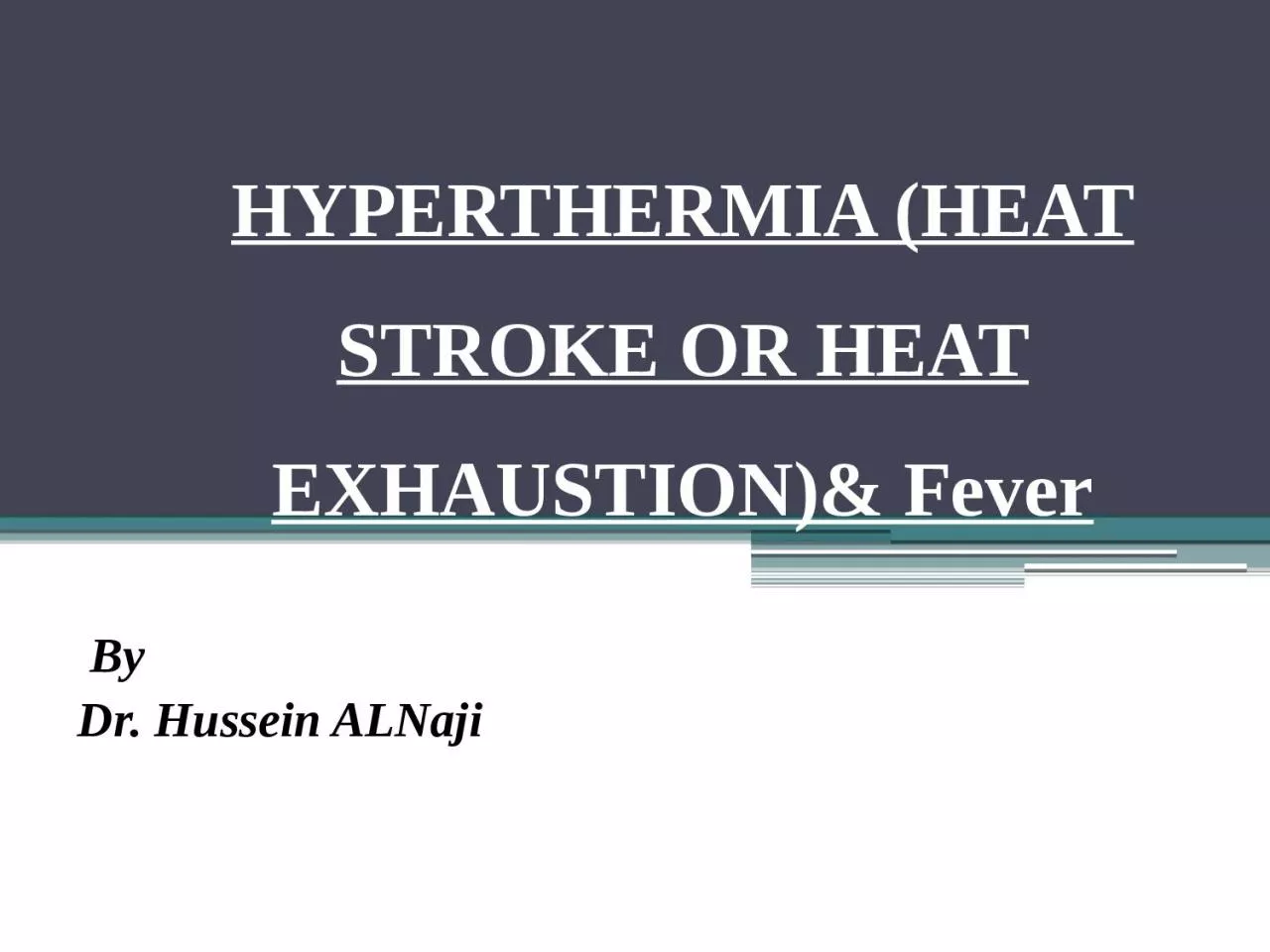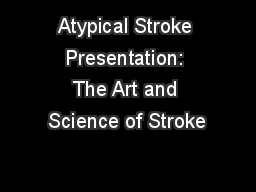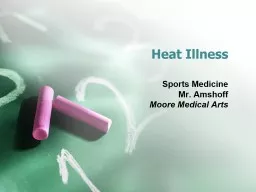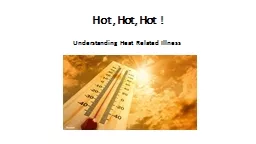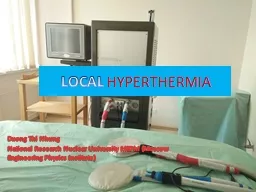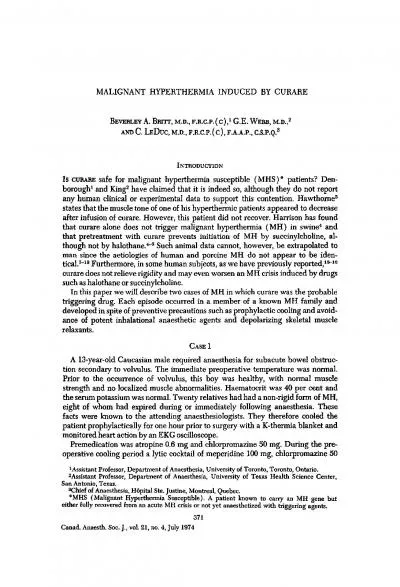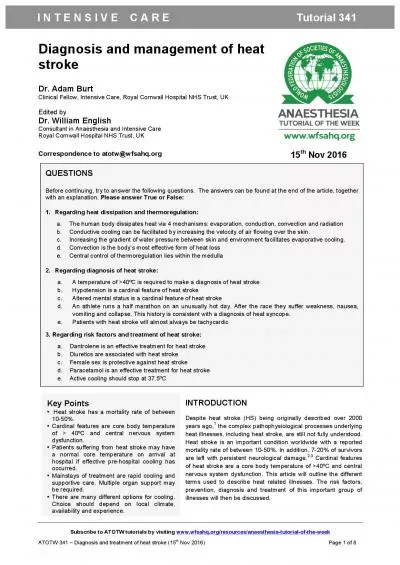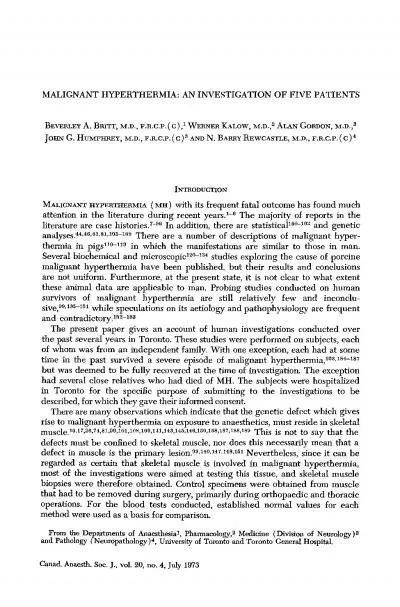PPT-HYPERTHERMIA (HEAT STROKE OR HEAT EXHAUSTION)& Fever
Author : sylvia | Published Date : 2022-06-28
By Dr Hussein ALNaji Hyperthermia is the elevation of core body temperature caused by excessive heat production or absorption or to deficient heat loss when the
Presentation Embed Code
Download Presentation
Download Presentation The PPT/PDF document "HYPERTHERMIA (HEAT STROKE OR HEAT EXHAUS..." is the property of its rightful owner. Permission is granted to download and print the materials on this website for personal, non-commercial use only, and to display it on your personal computer provided you do not modify the materials and that you retain all copyright notices contained in the materials. By downloading content from our website, you accept the terms of this agreement.
HYPERTHERMIA (HEAT STROKE OR HEAT EXHAUSTION)& Fever: Transcript
By Dr Hussein ALNaji Hyperthermia is the elevation of core body temperature caused by excessive heat production or absorption or to deficient heat loss when the causes of these abnormalities are purely physical. Heat Stress. The body normally cools itself by sweating. During hot weather, especially with high humidity, sweating isn't enough. Body temperature can rise to dangerous levels if precautions are not taken such as drinking water frequently and resting in the shade or air conditioning. Heat illnesses range from heat rash and heat cramps . Marching Band Members. Introduction. Heat-related health problems can be serious. Even when all efforts are made to ensure safe conditions for activities, it’s not always possible to regulate temperature – or to predict individual reactions to heat.. Shen. , . Jia. Nan (Cathy) . Xu. Malignant Hyperthermia and . Pickled Pigs . PHM142 Fall . 2015. Instructor: Dr. Jeffrey Henderson. Malignant hyperthermia in humans. Triggered after administration of certain anaesthetics. Sarah L. Livesay, DNP, RN, ACNP-BC. Assistant Professor. Rush University. Typical V. Atypical: Semantics?. Stroke identification according to the AHA/ASA. ASA . 5 . Suddens. Numbness or weakness of leg, arm, face. Cindy Burnette MSN, RN, CA-CP SANE. Trauma Outreach . Coordinator . for . Education and Injury Prevention. Medical Center Hospital. What are heat emergencies?. Heat related emergencies are a health crisis caused by exposure to hot weather and sun. Pages 52-53. LESSON PURPOSE. To identify to the student the common signs and symptoms of dehydration, hyponatremia and heat related issues. . PERFORMANCE OBJECTIVES. List the five symptoms which are common to dehydration. . Mr. . Amshoff. Moore Medical Arts. Heat Illness. By the end of this session you will be able to:. Differentiate among heat related issues. Recognize when someone has heat exhaustion. Respond appropriately to someone who has heat related illness. Pre Test. 1. Heat Related Illnesses can be fatal and result in death. A) . True. . B) . False. 2. Elderly and young children are not at risk for Heat Related Illnesses. A. ) . True. B) . False. Assistant Professor. Medical University of South Carolina. Charleston, SC. Date updated: 4/2018. Disclosures. None. Learning Objectives. Review a brief history of MH. Background and Epidemiology. Discuss the Pathophysiology/Mechanism of MH. Thi. . Nhung. National Research Nuclear University . MEPhI. (Moscow Engineering Physics . Institute). C. ontent. Overview (definition, effects of heat on cells). Methods (local, regional , whole body). Temperature Regulation. Heat Exhaustion. Sunstroke. Heat Cramps. Heat Injury Prevention. Thermal Regulation:. . How our body looses heat. Evaporation. RADIATION. CONDUCTION. CONVECTION. Heat Exhaustion. BEVERLEY A. BmTT, M.D., (C), 1 WEre3, M.D., 2 C. LEDvc, r~.D., F.A.A.P., C.S.P.Q. 3 CtmA~ safe for malignant hyperthermia susceptible (MHS)* patients? Den- borough 1 and King 2 have claimed that it i important group of illnesses will then dissipates heat via 4 mechanisms: evaporation, conduction, convection and radiation b.Conductive vomiting and collapse. This history is consistent with a diag A. F.R.C.P. ( C ) ,1 WERNER 2 ALAN 3 G. HUMPHREY, M.D., F.R.C.P. (C) 3 AND N. BARRY REWCASTLE, M.D., F.R.C.P. (C) 4 INTRODUCTION MALIGNANT (MH) its frequent fatal outcome has From the Departments o
Download Document
Here is the link to download the presentation.
"HYPERTHERMIA (HEAT STROKE OR HEAT EXHAUSTION)& Fever"The content belongs to its owner. You may download and print it for personal use, without modification, and keep all copyright notices. By downloading, you agree to these terms.
Related Documents

